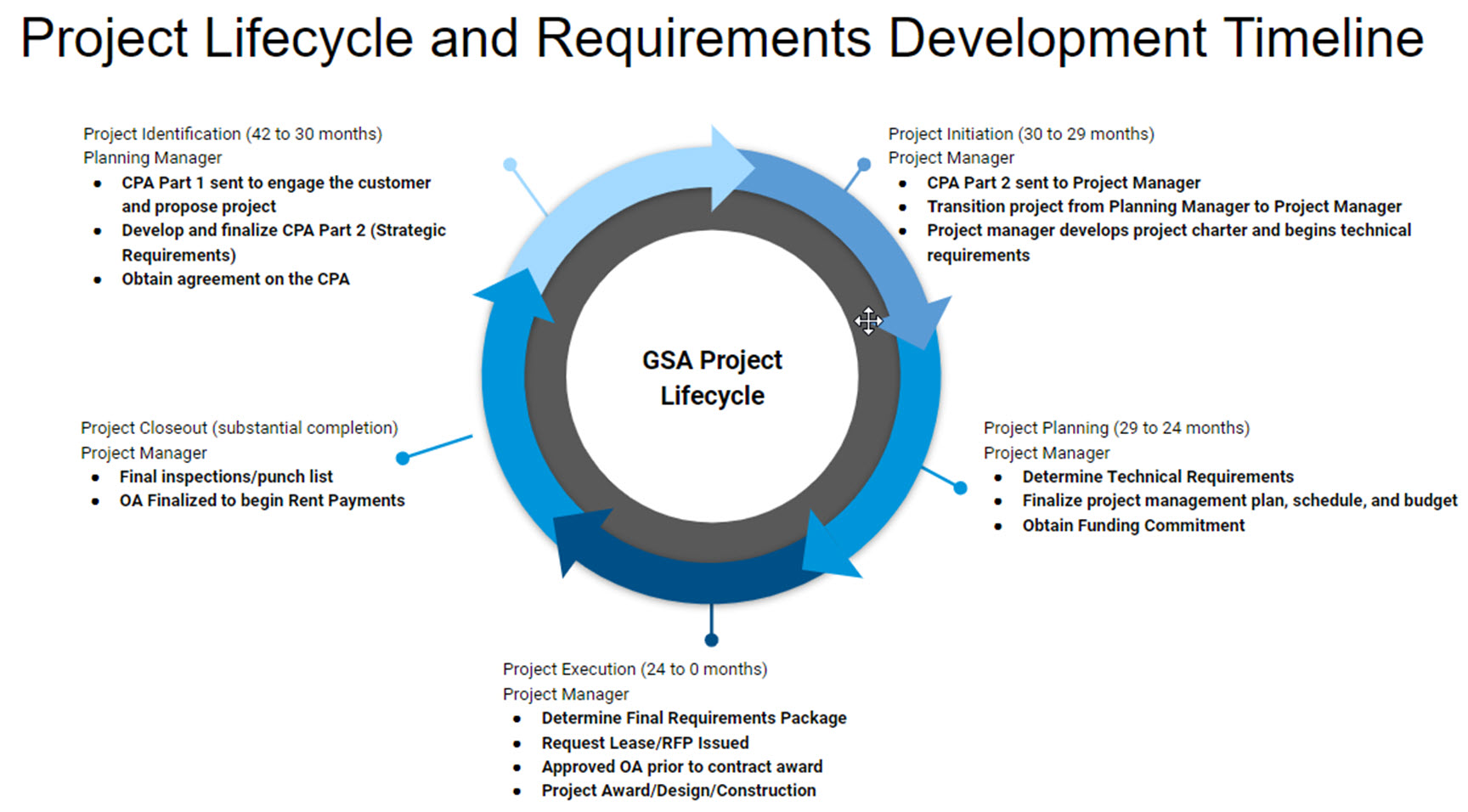Check us out on YouTube!
Looking for a quick guide to PBS resources and programs?
- Visit our new PBS customer services and resources page
- View details from our past and upcoming National Customer Forums
CES Classroom Platform

An official website of the United States government
Here’s how you know
Official websites use .gov
A .gov website belongs to an official government organization in the United States.
Secure .gov websites use HTTPS
A lock
( )
or https:// means you’ve safely connected to the .gov website. Share sensitive information only on official, secure websites.
The PBS occupancy planning process standardizes milestone dates, requirements terminology, and responsibilities as customer agency Occupancy Agreements (OA) approach expiration.
Following the planning process is critical to achieving PBS and our customers’ mutual goals of:
Occupancy planning and requirements gathering topics
The Client Project Agreement is a collaborative document that defines a project’s strategic requirements and other occupancy considerations. The CPA Part 1 includes your current occupancy information and provides GSA’s proposed strategy based on known information. Once we collaborate on your strategic requirements, we will outline the project parameters and obtain agreement in the CPA Part 2. Signature on the CPA indicates consensus on the project’s strategic requirements. Next, a project team is assigned to develop technical requirements.
To learn more about the CPA you can view Part 1 [PDF - 58 KB]and Part 2 [PDF - 81 KB].
Strategic requirements represent high level information that establishes basic project parameters. This information includes existing occupancy information, total square feet, approximate headcount, location, use of space, parking, and utilization rate for the follow on project. Identifying strategic requirements on time is critical to a project’s overall success.
Functional requirements are developed from the strategic requirements by the GSA Project Manager and project team. This refined data set defines the new space’s parameters, operations, expectations, schedule, and cost goals. Functional requirements include, but are not limited to, a verified total square footage, headcount, and geographic location. The Project Manager reviews the functional requirements and the initial project management plan/schedule with the customer at the project kick-off meeting.
Technical requirements refine the strategic requirements into the specific details needed to deliver the project. Technical requirements include agency-specific requirements, agency-specific security information, basic space plans and adjacency plans. This is the final step in the requirements-gathering process before a Request for Lease Proposals (RLP) can be issued or a construction project can begin in owned locations. These details will inform the Project Management Plan. Note: Initial schedule, costs, and an OA will be shared prior to lease award.
Project lifecycle and milestones
(milestone dates are for non-prospectus projects. Prospectus project milestones noted separately)

Identification phase - 36-30 prior to OA expiration*
18-12 months prior to OMB submission (prospectus projects)
Initiation phase - 30-29 months prior to OA expiration
12-11 months prior to OMB submission (prospectus projects)
Planning phase - 29-24 months prior to OA expiration
53-36 months prior to OA expiration (aligns with CILP+ date)++ (prospectus projects)
Execution phase - 24-0 months prior to OA expiration
36-0 months prior to OA expiration+++ (prospectus projects)
Close out phase - substantial completion
* In some cases, factors beyond expiration can trigger engagement and strategic requirements development.
** Certain PBS personnel, such as the Lease Contracting Officer, will remain involved at multiple phases
*** Or other form of written documentation showing acceptance of the strategy in the CPA
+ Capital Investment and Leasing Program Prospectus (CILP)
++ Once strategic requirements are identified, project manager secures technical requirements over next 24 months
+++ Typical duration, actual schedule may vary
Check us out on YouTube!
Looking for a quick guide to PBS resources and programs?
CES Classroom Platform
Error, The Per Diem API is not responding. Please try again later.
No results could be found for the location you've entered.
Rates for Alaska, Hawaii, and U.S. territories and possessions are set by the Department of Defense.
Rates for foreign countries are set by the Department of State.
Rates are available between 10/1/2022 and 09/30/2025.
The End Date of your trip can not occur before the Start Date.
Traveler reimbursement is based on the location of the work activities and not the accommodations, unless lodging is not available at the work activity, then the agency may authorize the rate where lodging is obtained.
Unless otherwise specified, the per diem locality is defined as "all locations within, or entirely surrounded by, the corporate limits of the key city, including independent entities located within those boundaries."
Per diem localities with county definitions shall include"all locations within, or entirely surrounded by, the corporate limits of the key city as well as the boundaries of the listed counties, including independent entities located within the boundaries of the key city and the listed counties (unless otherwise listed separately)."
When a military installation or Government - related facility(whether or not specifically named) is located partially within more than one city or county boundary, the applicable per diem rate for the entire installation or facility is the higher of the rates which apply to the cities and / or counties, even though part(s) of such activities may be located outside the defined per diem locality.